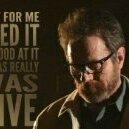Mike Tyson's Punch Out Retrospective
[caption id=attachment_4052" align="aligncenter" width="751] Keep laughing, jerk.[/caption]
Living the Dream: Fight to the Top
Little Mac, our protagonist, has a dream to punch his way through the ranks of Boxing’s greatest champions and face off against Mr. Dream himself. Before he can face Mr. Dream, he has to knock down a legion of quirky and tricky boxers. Little Mac must complete each ranked match in order to rise in the rankings. He must bust through the minor and major circuits, conquer the Title Bout, and earn his time in the ring with Mr. Dream.
While there isn’t too much more to the plot, and there isn’t much of a need for it. It’s a classic tale of an unknown’s rise to the top. It’s the 'every man’ story: someone with a dream up against the odds with the desire for glory. Just make sure you have a pen and paper handy; otherwise, your dream may end before you fall asleep.
[caption id=attachment_4051" align="aligncenter" width="747] Mr. Tyson...or Mr. Dream...Whatever[/caption]
Rising in the Ranks: Eye of the Tiger
Punch Out!! pits Little Mac up against 14 opponents. There are three boxers in the Minor Circuit, four in the Major Circuit, and six in the World Circuit. The final opponent in the game is Mr. Dream/Mike Tyson. Players must defeat each opponent in order to work their way up to Mr. Dream. If Mac happens to lose a bout, it’s no big deal; he has the chance to have a rematch. Unfortunately, if players lose a Title Bout (the match at the end of each Circuit,) he will drop down in the ranking and have to face a previous opponent. The penalty for losing the Major or Minor Circuits is falling back one place. For the World Circuit, Mac will fall back two spots.
Between Title Bouts, players are treated to a training cut scene. Mac follows after his trainer, and the players are gifted with a pass-code. Nope – there was no saving in Mike Tyson’s Punch Out!! We had pass-codes that would return us to beginning of whichever Circuit we were about to start. Thankfully, this includes the fight with Mr. Dream.
Training Montague: Learning How to Fight
Punch Out!! is a fighting sports game. Players control Little Mac as he faces off against various opponents of exponential difficulty. His moves are limited to left and right jabs, dodging, and a powerful uppercut. As the round begins, the timer is set and the match commences.
Mac must dodge punches and lay a few of his own in an attempt to knock out his opponent. For every punch he lands, Mac gets points. He can also gather up to three stars at a time – those are used for uppercuts. Players can get these stars when they strike an opponent at a specific time. For instance, when Von Kaiser crouches low, players can hit him in the stomach and retrieve a star.
Roll With the Punches
Mac must watch his hit points and his hearts. If a player is hit, Mac’s hearts and hit points drop. In addition, his hearts will also drop if an opponent blocks his punches. When a player loses all of his hearts, Mac will turn pink and he will not be able to punch. Mac will have to dodge and block until he recovers some of his hearts. When all of his hit points and hearts have depleted, Mac will be down for the count. Players will have to mash the buttons in order to get Mac back on his feet. He can only be knocked down three times in any bout.
After three minutes, the round will end – and players get a chance to recover some hit points by holding down the buttons. This trick only works a few times, so gamers need to be choosy about when they use it. Players can finish a match by either knocking out their opponent (if he stays down for ten seconds), knocking them down three times in a row, or by a decision – that is based on point total. However, some opponents can’t be beaten by decision and must be knocked out. If Mac loses three times or is defeated in the ‘Dream Fight,’ it’s considered an automatic game over.
[caption id=attachment_4050" align="aligncenter" width="679] Good luck remembering that code![/caption]
Final Bout: TKO
What can be said about this thrilling, blood-pumping boxing game? Well, the characters are both amusing and challenging – it’s interesting just to
just to see the skills each of them has. That novelty fades when those challengers start pounding Mac into the ground. The game presents a fair, sometimes more than fair, amount of challenge, especially when it comes to the Dream Fight.
But no matter how many times Mac gets knocked down, players will want to pick him back up again for another shot at the title. It truly is classic; if you’ve never played this game before, it is worth it. There is a nice balance of light-hearted fun and fine-tuned skill in this old school game. So, float like a butterfly and sting like a bee while you take on
to win the championship. You’ll be happy you did.


